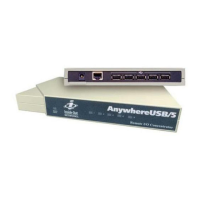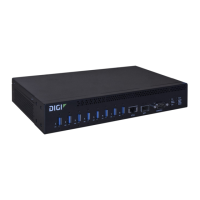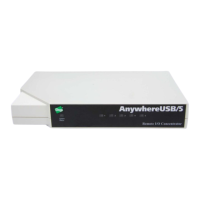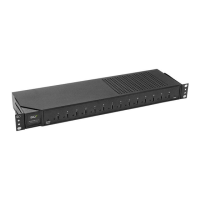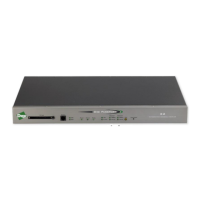Virtual Private Networks (VPN) IPsec
AnywhereUSB® Plus User Guide
597
1. Log into the AnywhereUSB Plus command line as a user with shell access.
Depending on your device configuration, you may be presented with an Access selection
menu. Type shell to access the device shell.
2. At the shell prompt, execute the following command:
# ipsec stroke loglevel ike debug_level
#
where debug_level is one of the following:
n
-1 — (Default) No debug information is written. This is the equivalent of turning off
debug messages for IPsec.
n
0 — Basic auditing logs, (for example, SA up/SA down).
n
1 — Generic control flow with errors. Select this for basic debugging information.
n
2 — More detailed debugging control flow.
n
3 — Includes RAW data dumps in hexadecimal format.
n
4 — Also includes sensitive material in dumps (for example, encryption keys).
3. Type exit to exit the Admin CLI.
Depending on your device configuration, you may be presented with an Access selection
menu. Type quit to disconnect from the device.
Configure a Simple Certificate Enrollment Protocol client
Simple Certificate Enrollment Protocol (SCEP) is a mechanism that allows for large-scale X.509
certificate deployment. You can configure AnywhereUSB Plus device to function as a SCEP client that
will connect to a SCEP server that is used to sign Certificate Signing Requests (CSRs), provide
Certificate Revocation Lists (CRLs), and distribute valid certificates from a Certificate Authority (CA).
Required configuration
n
Enable the SCEP client.
n
The fully-qualified domain name of the SCEP server to be used for certificate requests.
n
The challenge password provided by the SCEP server that the SCEP client will use when
making SCEP requests.
n
The distinguished name to be used for the CSR.
n
The file name of the Certificate Revocation List (CRL) from the Certificate Authority (CA).
Additional configuration
n
The number of days that the certificate enrollment can be renewed, prior to the request
expiring.
ÉWebUI
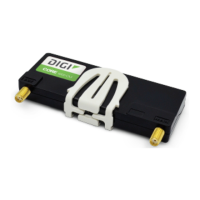
